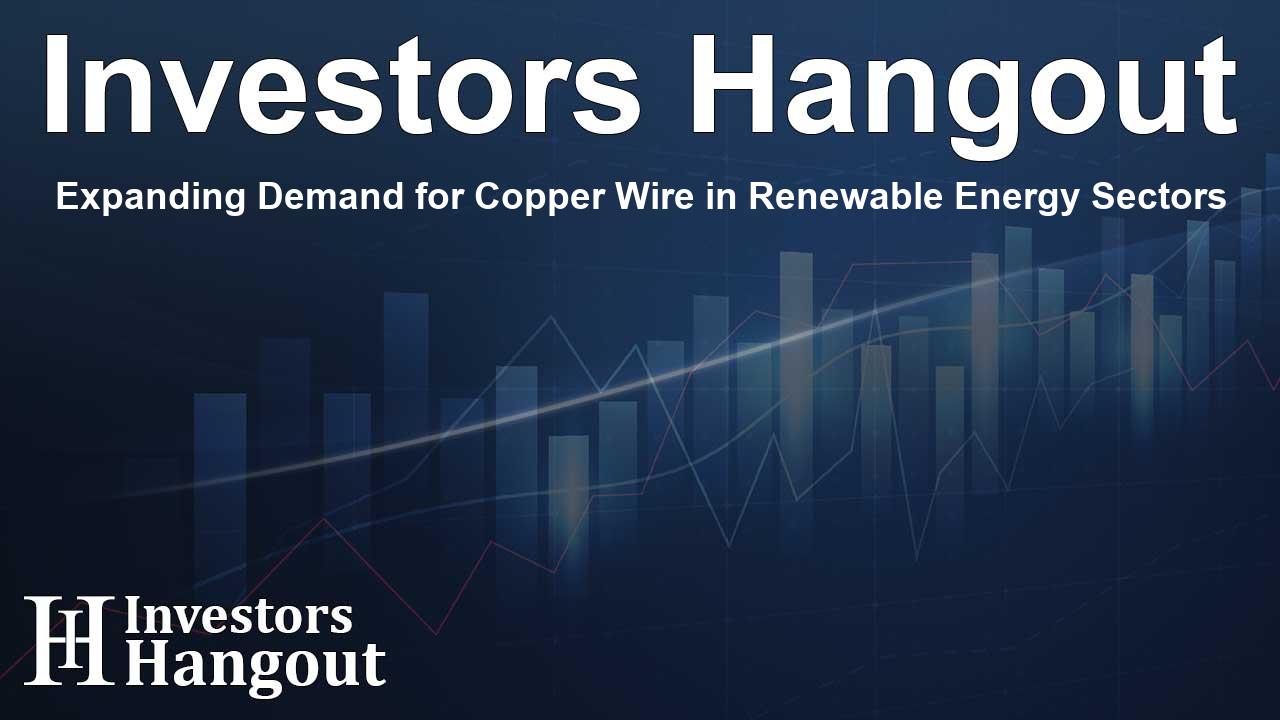Expanding Demand for Copper Wire in Renewable Energy Sectors

Copper Wire Market Growth Amid Renewable Energy Demand
The copper wire market is on an exciting path towards growth, projected to increase by USD 51.1 billion between 2025 and 2029. This expansion is largely fueled by the increasing demand from the communication and electrical sectors, aligning with trends in renewable energy installations. Despite the growth potential, there are challenges that the industry must navigate, particularly regarding environmental regulations affecting copper production.
Drivers Behind Market Growth
Copper wire is highly sought after due to its excellent electrical and thermal conductivity, making it a go-to material in various applications. Its flexibility and durability allow it to thrive in demanding environments, including the automotive and power generation industries. In recent years, the surge in renewable energy projects, especially in solar and wind sectors, has accelerated the demand for copper wires. Additionally, with governments encouraging the transition towards sustainable energy, this trend is likely to continue.
Key Applications of Copper Wire
Incorporating copper wire into renewable energy infrastructure is crucial. The wire aids in the manufacturing of essential electrical components such as solar panels, transformers, and electric cables, enhancing their energy efficiency. Its superior conductivity ensures that these renewable systems function optimally, contributing to reduced installation costs over time.
Challenges Facing the Copper Wire Industry
However, the copper wire industry does face notable challenges. The processes involved in copper mining and wire production have environmental footprints, such as habitat disruption and pollution. As regulations tighten globally, producers must adapt to maintain compliance while managing costs. This situation is compounded by the inherent challenges of copper smelting, which can release harmful contaminants like sulfur dioxide.
Market Segmentation Overview
The copper wire market is intricately segmented into various categories. By type, the market includes low voltage, medium voltage, and high voltage applications. In terms of end-users, the primary sectors are electrical and electronics, building and construction, telecommunication, and transportation. Each segment presents unique opportunities and growth drivers.
Understanding Voltage Utilization
Low voltage copper wire plays a fundamental role across multiple industries. Its ability to effectively conduct electricity with minimal losses makes it indispensable for residential and commercial setups. Similarly, high voltage copper wire is essential for power distribution systems, ensuring electricity is transmitted effectively over long distances.
The Rising Importance of Sustainable Practices
Today, there’s a significant shift towards sustainable practices, particularly in how industries manage resources like copper. As renewable energy systems proliferate, the reliance on copper wire only intensifies. Policymakers are actively promoting incentives that encourage sustainable construction and transportation solutions, firmly placing copper’s role in this landscape at the forefront.
Market Research Insights
The analysis of the copper wire market reveals key insights into the ongoing transformation within industries heavily reliant on electrical components. The high conductivity of copper wire gives it advantages over alternative materials such as aluminum, especially in demanding applications like data centers and telecommunications. This characteristic bolsters copper's reputation as the material of choice in various sectors.
Future Prospects for Copper Wire
Looking ahead, the copper wire market appears poised for robust growth as urbanization and technological advancements continue to escalate. The rise of electric vehicles and smart grid technology will likely further enhance the demand for efficient electrical solutions. As renewable initiatives gain traction, the copper wire's high-performance qualities are expected to play a vital role in supporting this evolution.
Frequently Asked Questions
1. What factors are driving the growth of the copper wire market?
The growth is primarily driven by increased demand from the communication, electrical, and renewable energy sectors due to copper's excellent conductivity and applications in sustainable technologies.
2. What are the main challenges faced by the copper wire industry?
Major challenges include environmental regulations, production costs associated with copper smelting, and the environmental impact of mining activities.
3. How is copper wire used in renewable energy applications?
Copper wire is essential in the manufacture of solar panels, transformers, and other electrical components crucial for efficient energy transfer in renewable energy systems.
4. What segments exist within the copper wire market?
The market is segmented by voltage type (low, medium, high) and end-user industries, including electrical, construction, and telecommunications.
5. What does the future look like for the copper wire market?
The future appears promising, with expected growth driven by urbanization, technological advancements, and increased regulatory support for sustainable practices in various sectors.
About The Author
Contact Dylan Bailey privately here. Or send an email with ATTN: Dylan Bailey as the subject to contact@investorshangout.com.
About Investors Hangout
Investors Hangout is a leading online stock forum for financial discussion and learning, offering a wide range of free tools and resources. It draws in traders of all levels, who exchange market knowledge, investigate trading tactics, and keep an eye on industry developments in real time. Featuring financial articles, stock message boards, quotes, charts, company profiles, and live news updates. Through cooperative learning and a wealth of informational resources, it helps users from novices creating their first portfolios to experts honing their techniques. Join Investors Hangout today: https://investorshangout.com/
The content of this article is based on factual, publicly available information and does not represent legal, financial, or investment advice. Investors Hangout does not offer financial advice, and the author is not a licensed financial advisor. Consult a qualified advisor before making any financial or investment decisions based on this article. This article should not be considered advice to purchase, sell, or hold any securities or other investments. If any of the material provided here is inaccurate, please contact us for corrections.
